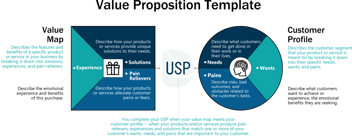How Qualitative Data Can Improve CVM - Step 2 Driving Adoption

Quotes and Testimonials Enhance Case Studies and Marketing Materials
Quantitative data is crucial in value selling, as we’ve covered before in our thought pieces, “Value Realization: The Key to Customer Success” and “How to Measure Value Realization: Metrics to Focus On.” But what about qualitative data? Turns out that it is also critical to Customer Value Management. With insight on what customers think and feel, your value selling strategy will mature significantly.
Customer feedback enhances your overall company’s user experience, especially your sales force. When you receive information on how customers are using your product, you can better anticipate their needs in the future by adjusting your value equations to reflect their concerns, challenges, and preferences. Each bit of data provides further insight that can be used to drive renewals, up-sells, and cross-sells, and even to uncover general principles about selling in your industry. By including customer sentiment in Customer Value Management, your company can improve its sales outcomes across the board.
How do you assess customer sentiment?
Information on customer sentiment can take several forms. At its most subjective, it includes quotes and testimonials from product users. These can be collected in a variety of ways, from online polls to focus groups to ethnographic-style interviews. It is important to survey many different kinds of users in order to see how various demographics experience the product. You want to make sure you have a diversity of professions and industries.
Observations are an effective way to gauge customer sentiment less intrusive and more authentically. They allow you to gain information about how the customer uses the product without having to rely on the customer’s perception of their own behaviors. Observations also provide insight into customers’ adopted behaviors, answering such questions as: Is the customer using the product’s functionality to its full potential? If not, what are the barriers holding them back? What are customers doing differently now? How much time does this product save the customer?
Observations can also provide data about product uptime. Assessing the reliability of your product is key to creating an accurate value hypothesis. If the product is not working properly for customers, they are less likely to use it and extract its full value. Examining the times and places where the product’s usage is suboptimal can shed insight on how to improve customer success.
How do you apply these insights to improve your value selling model?
Customer sentiment data provides important information that you can use to revise and improve your value hypothesis. It facilitates Guided Discovery: steps to effectively capture the customers’ pain and drive toward solutioning. When layered with additional quantitative information, it provides a comprehensive assessment of value that gets at both the technical and the human aspects of user experience.
The process of surveying customers builds your brand’s credibility by showing users that their experience matters, positioning you as a trusted advisor. It also can be effectively deployed to create a narrative around your product. This narrative is extremely helpful in creating compelling case studies and marketing materials, setting a backdrop against which the product can be posed as a solution.
As Lizzie O’Rourke, Director of Marketing at DecisionLink, pointed out in a recent webinar, the story is what makes the sale. “Everyone can use a calculator,” she said, but not everyone can tell a story.
A product narrative contains two essential elements: a context and a value statement. The context characterizes the customer’s pain points while the value statement communicates the tangible benefit that the product will provide. As Ken Grohe advised in a recent webinar, value selling is all about, “Finding out where the biggest pain is and how we can alleviate that in the easiest way possible.” Quotes from real customers provide convincing testimony to potential customers about the effectiveness of your product.
Having a Customer Value Management solution that can integrate data from existing systems and streamline capture of client insights is an essential step in making value part of the end-to-end customer journey. ValueCloud helps you harness customer sentiment data to make customers happier and close more deals.
Learn more about how to capture customer sentiments with a repeatable and scalable process today.

 ValueCloud
ValueCloud
.png?width=118&height=76&name=Rectangle%20(3).png) ValueCloud Ignite
ValueCloud Ignite
.png?width=92&height=92&name=Rectangle%20(4).png) Free Assessment
Free Assessment
.png?width=100&height=100&name=Rectangle%20(5).png) Watch a Demo
Watch a Demo
.png?width=82&height=96&name=Rectangle%20(6).png) Value Calculator
Value Calculator

.png?width=62&height=51&name=Group%2010%20(1).png) Marketing
Marketing
 Sales
Sales
 Customer Success
Customer Success
 Engage Prospects
Engage Prospects
 Win Deals Faster
Win Deals Faster
 Retain Customers
Retain Customers
.png?width=62&height=62&name=Rectangle%20(8).png) Adopt and Scale
Adopt and Scale
.png?width=54&height=54&name=Rectangle%20(9).png) Cybersecurity
Cybersecurity
 Healthcare
Healthcare
.png?width=54&height=54&name=Rectangle%20(10).png) IT & Software
IT & Software




